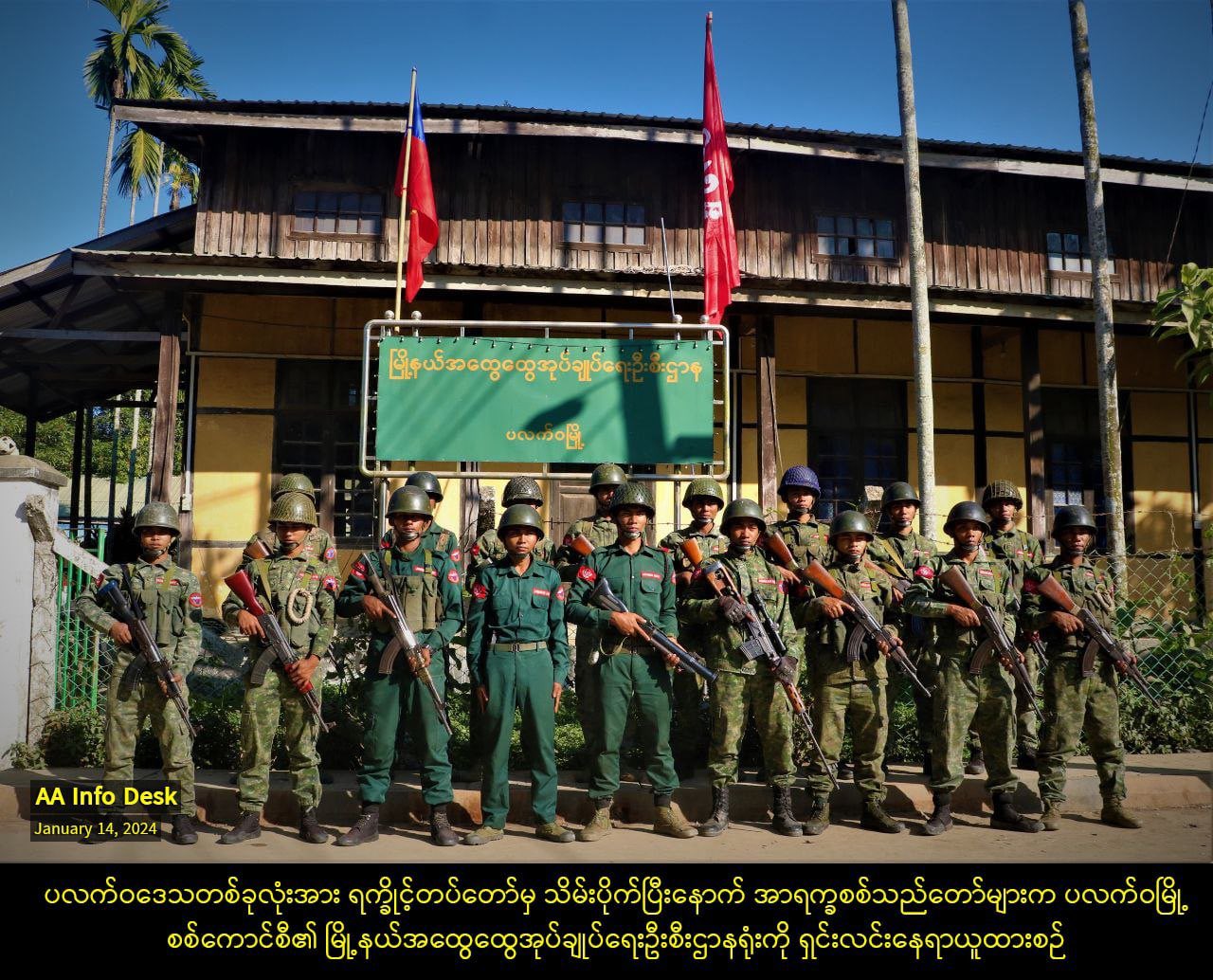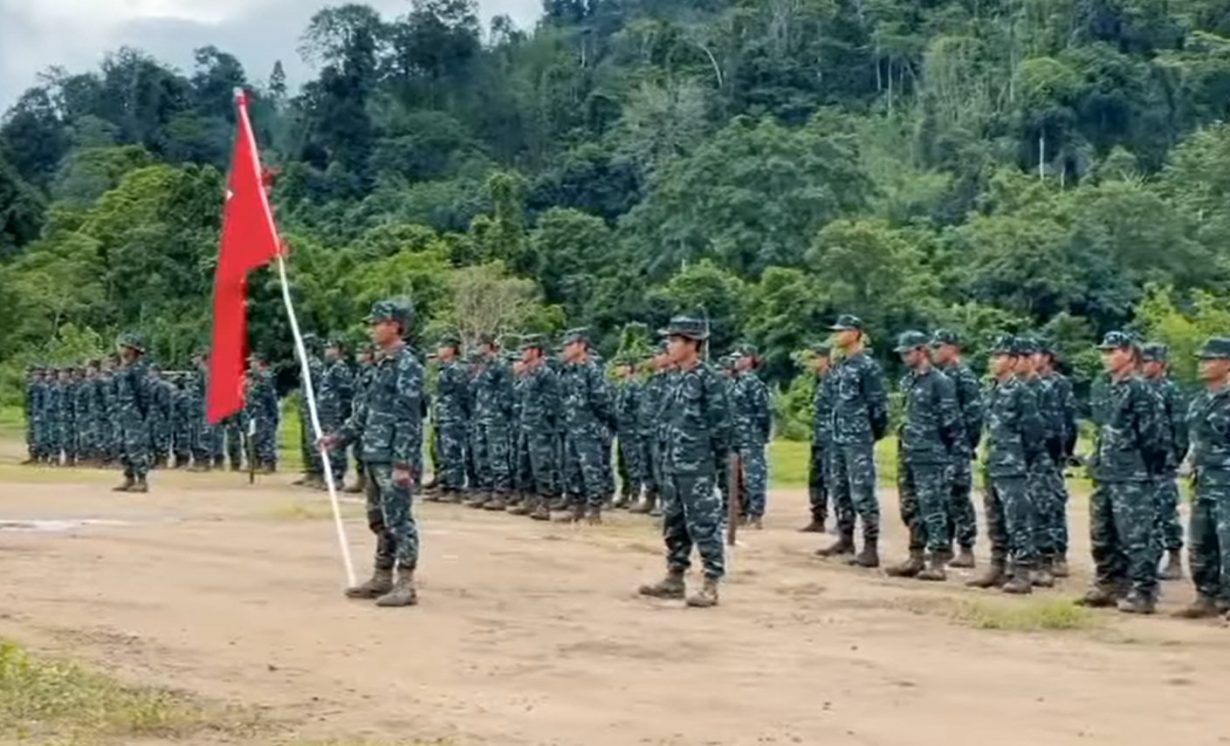While the Russia-Ukraine war in Eastern Europe and the Israel-Hamas-Iran conflict in the Middle East dominate global attention, another country is quietly suffering the ravages of conflict that borders India and China.
Myanmar, once known as Burma, is this Southeast Asian nation of 55 million people that remains embroiled in a brutal civil war. Unfortunately, the crises in Ukraine and Israel have overshadowed its struggles.
Myanmar: A Nation in Civil War
Myanmar has been engulfed in civil war for nearly four years now, grappling with a severe political crisis.
The turmoil began in February 2021 when the military junta overthrew the elected civilian government, ousting Aung San Suu Kyi and seizing power. This coup abruptly halted the country’s fragile progress toward democracy.
According to the United Nations, Myanmar’s military has acquired over $1 billion in arms, including from Russia. Since then, intense fighting has erupted in northern Myanmar, pitting local rebel groups against the military government.
The conflict has only escalated, with the coup igniting widespread violence and further fracturing a nation already divided along ethnic lines.
However, in a significant blow to the junta, the State Administrative Council (SAC) lost control of key territory in northeastern Shan State near the Chinese border following an October 2023 offensive by rebel forces.
As the country disintegrates, the consequences are being felt far beyond its borders. As Myanmar teeters on the brink of disintegration, neighboring countries are increasingly alarmed by the chaos spilling across its borders.

Ripple Effects Of Civil War
On October 18, an explosive device targeted China’s consulate in Mandalay, Myanmar, just ahead of a potential visit by junta leader Min Aung Hlaing to China.
The attack comes amid rising anti-China sentiment in Myanmar, fueled by Beijing’s recent pressure on rebel groups to cease fighting against the military regime.
While the blast caused no casualties, it did partially damage the consulate building. The site is reportedly guarded by junta forces and the Pyu Saw Htee militia.
In response, the junta released a statement blaming “terrorists” for the attack and announced that an investigation is underway in cooperation with consulate officials. China expressed “deep shock” and condemned the attack, urging Myanmar’s government to hold the perpetrators accountable.
This incident follows a similar event in January when stray artillery fire from clashes between junta forces and rebels injured five people in a Chinese border town. China strongly criticized the incident and vowed to safeguard its citizens’ lives and property.

China’s Role In Myanmar’s Unrest
China is trying to position itself as a peacemaker in the region, but its role is more complex than it seems.
As reported by ‘The Irrawaddy’ – a news platform founded by exiled Myanmar journalists, China is also a significant ally and arms supplier to Myanmar’s junta while maintaining connections with ethnic groups opposing the military in the northern Shan state.
Over the past three years, Beijing has strived to foster a close relationship with the junta while attempting to balance its ties with rebel groups. Recently, China has shifted its approach to the Myanmar crisis, taking a more active role in influencing the conflict’s outcome. The unrest poses a threat to the stability of its 2,200-kilometer border with Myanmar.
As the unrest threatens to destabilize its border regions, China has urged both the military government and the rebels to negotiate and restore peace. Last December, China successfully mediated a ceasefire agreement between the ruling junta and three ethnic armed groups from Kokang, Taang, and Rakhine; however, fighting has persisted despite these efforts.
For China, peace in Myanmar is crucial, not only for border security but also for its broader strategic interests in the region.
Chinese Investment in Myanmar
Despite the military coup and international sanctions, China remains one of the few countries continuing to invest heavily in Myanmar. Reports indicate that Chinese investments account for roughly 25% of Myanmar’s total foreign investment.
Beijing’s financial involvement includes significant infrastructure, port, and electricity projects valued at $22 billion. These investments are strategic for China, as Myanmar provides critical access to the Indian Ocean, reinforcing its geopolitical and economic ambitions in the region.
What’s Ahead For Myanmar?
The conflict has evolved into a modern technological battleground. Both the military and rebel forces are increasingly relying on drone warfare.
In an opinion piece, Igor Blazevic, a senior adviser at the Prague Civil Society Centre, stated, “The fundamental problem with any negotiated settlement of Myanmar’s crisis is that Min Aung Hlaing still seeks total victory. For the junta, ceasefires or elections are merely extensions of war by other means.”
Blazevic further noted that “at this moment, the junta and military are weak. They are running out of money, and they do not have enough troops to fight on multiple fronts across a big country. They have also realized that their military hardware is obsolete, and they need to upgrade their capacity for drone war and digital surveillance.”
Recent reports suggest that the Myanmar military plays catch-up in the drone war with insurgents. Myanmar’s military has been ramping up its use of drones, deploying a combination of retrofitted commercial drones and customized military munitions to carry out a torrent of deadly strikes against rebel forces and civilians, according to a WashingtonPost report.
In Myanmar, rebels have used low-cost drones bought off the shelf or assembled using 3D-printed parts to bomb targets deep inside military-held territory, including in urban centers like Naypyidaw.
The Hidden Crisis
Though the wars in Ukraine and Israel dominate global attention, Myanmar’s ongoing civil war has significant implications for India. Myanmar, a country of 55 million, lies between India and China, and its instability poses strategic challenges for New Delhi.
Myanmar’s war has spiraled into a human rights and economic disaster, contributing to its reputation as a hub for drugs, online scams, and money laundering.
For India, the primary concern is maintaining stability in its northeastern states, which borders Myanmar. The conflict has also led to an influx of refugees into India, further complicating the situation.
The combination of political instability, military violence, and economic collapse continues to devastate Myanmar, with implications far beyond its borders.
As the international community remains focused on other global conflicts, Myanmar’s crisis is also a reminder that regional instability can have far-reaching consequences for global security and humanitarian concerns.
- Shubhangi Palve is a defense and aerospace journalist. Before joining the EurAsian Times, she worked for ET Prime. In this capacity, she focused on covering defense strategies and the defense sector from a financial perspective. She offers over 15 years of extensive experience in the media industry, spanning print, electronic, and online domains.
- Contact the author at shubhapalve (at) gmail.com




